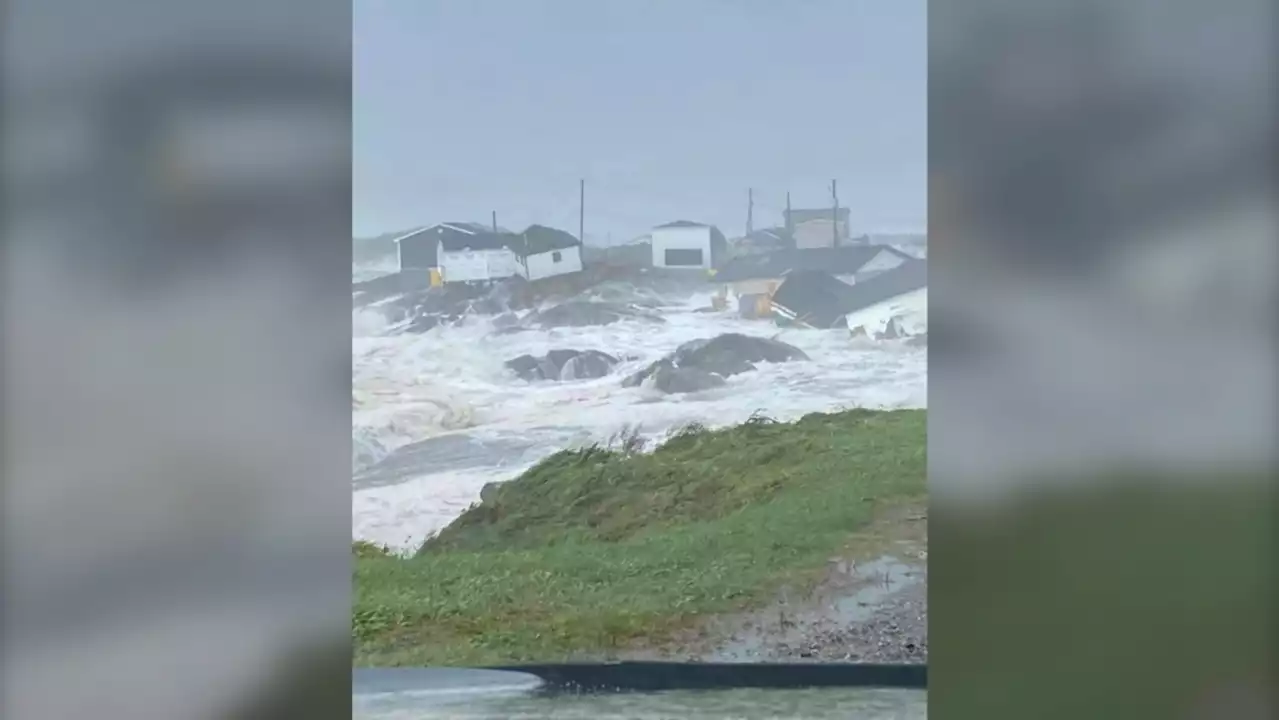Hurricanes don’t usually maintain high wind speeds as they make their way toward Atlantic Canada. But ocean warming may be linked to the increasing intensity of storms like Fiona.
Atlantic Canada has been left reeling from the impacts of one of the largest and most dangerous ocean storms to ever hit the region. Hurricane Fiona made landfall as a powerful post-tropical storm on Saturday along the eastern shore of Nova Scotia, Prince Edward Island and Newfoundland and Labrador, delivering heavy rainfall, damaging winds and massive waves.
Offshore, the wave heights exceeded eight to 10 metres on the Scotian Shelf and reached 17 metres at the Banqureau Banks wave buoy. How did Fiona get into Canadian water with such size and intensity? This is related to its heat source: the ocean. Ocean warming may be linked to the increasing intensity of storms making landfall and to the development of strong hurricanes.
In addition to large waves and storm surges, hurricanes also bring heavy precipitation that floods the land surface and can affect coastal groundwater systems.
Philippines Latest News, Philippines Headlines
Similar News:You can also read news stories similar to this one that we have collected from other news sources.
 Damage to Canada from storm Fiona is 'unprecedented' | SaltWireOTTAWA (Reuters) - The breadth of the damage caused by the powerful storm Fiona that ravaged Canada's Atlantic coast on Saturday has never been seen ...
Damage to Canada from storm Fiona is 'unprecedented' | SaltWireOTTAWA (Reuters) - The breadth of the damage caused by the powerful storm Fiona that ravaged Canada's Atlantic coast on Saturday has never been seen ...
Read more »
 The incredible power of Fiona making landfall in Atlantic Canada through the eyes of storm chasersPost-tropical storm Fiona walloped Atlantic Canada after making landfall early Saturday and storm chasers captured the incredible power as the storm roared ashore.
The incredible power of Fiona making landfall in Atlantic Canada through the eyes of storm chasersPost-tropical storm Fiona walloped Atlantic Canada after making landfall early Saturday and storm chasers captured the incredible power as the storm roared ashore.
Read more »
 Fiona wreaks havoc with weekend flights to Atlantic CanadaFiona is making it a challenging travel weekend for anyone heading to Atlantic Canada.
Fiona wreaks havoc with weekend flights to Atlantic CanadaFiona is making it a challenging travel weekend for anyone heading to Atlantic Canada.
Read more »
